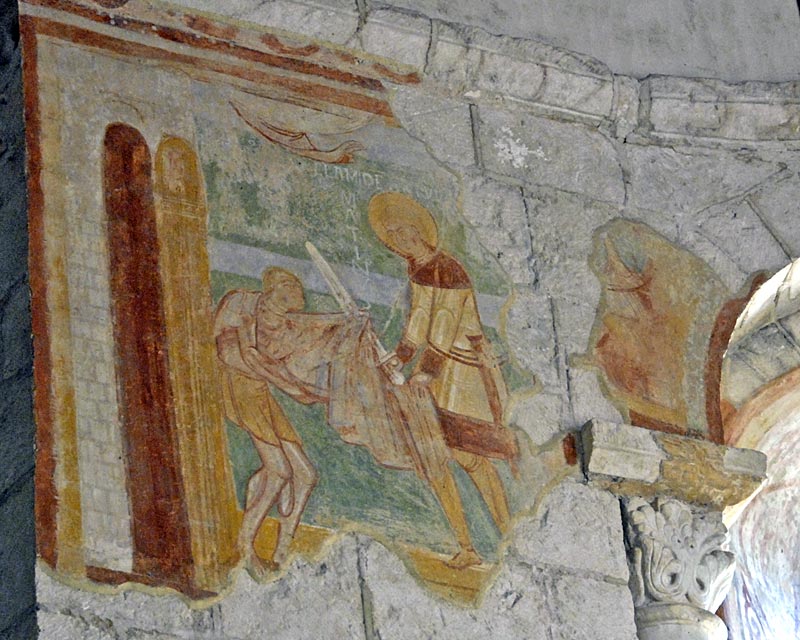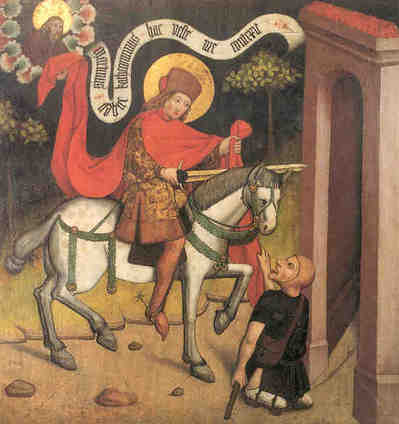
Martin of TOurs cuts his cloak to give to a beggar, depicted on the walls of the church of Saint Hilary, Poitiers.
While Martin was a soldier in the Roman army and deployed in Gaul (modern-day France), he experienced a vision, which became the most-repeated story about his life. One day as he was approaching the gates of the city of Amiens, he met a scantily clad beggar. He impulsively cut his military cloak in half to share with the man. That night, Martin dreamed of Jesus wearing the half-cloak he had given away. He heard Jesus say to the angels: “Here is Martin, the Roman soldier who is not baptized; he has clad me.” In another version, when Martin woke, he found his cloak restored to wholeness. The dream confirmed Martin in his piety, and he was baptized at the age of 18.
The part kept by himself became the famous relic preserved in the oratory of the Merovingian kings of the Franks at the Marmoutier Abbey near Tours. During the Middle Ages, the supposed relic of St. Martin’s miraculous cloak, (cappa Sancti Martini) was carried by the king even into battle, and used as a holy relic upon which oaths were sworn. The cloak is first attested in the royal treasury in 679, when it was conserved at the palatium of Luzarches, a royal villa that was later ceded to the monks of Saint-Denis by Charlemagne, in 798/99.
The priest who cared for the cloak in its reliquary was called a cappellanu, and ultimately all priests who served the military were called cappellani. The French translation is chapelains, from which the English word chaplain is derived. One of the many services a chaplain can provide is spiritual and pastoral support for military service personnel by performing religious services at sea or in the battlefield.
A similar linguistic development took place for the term referring to the small temporary churches built for the relic. People called them “capella”, the word for a little cloak. Eventually, such small churches lost their association with the cloak, and all small churches began to be referred to as “chapels”.
According to the most widespread variation of the cloak story, Saint Martin cut off half of his cloak in order to offer it to a beggar and along the way, he gave the remaining part to a second beggar. As he faced a long ride in a freezing weather, the dark clouds cleared away and the sun shone so intensely that the frost melted away. Such weather was rare for early November, so was credited to God’s intervention. The phenomenon of a sunny break to the chilly weather on Saint Martin’s Day (11 November) is called Verão de São Martinho (Saint Martin’s Summer, veranillo de san Martín in Spanish) in honor of the cloak legend.

